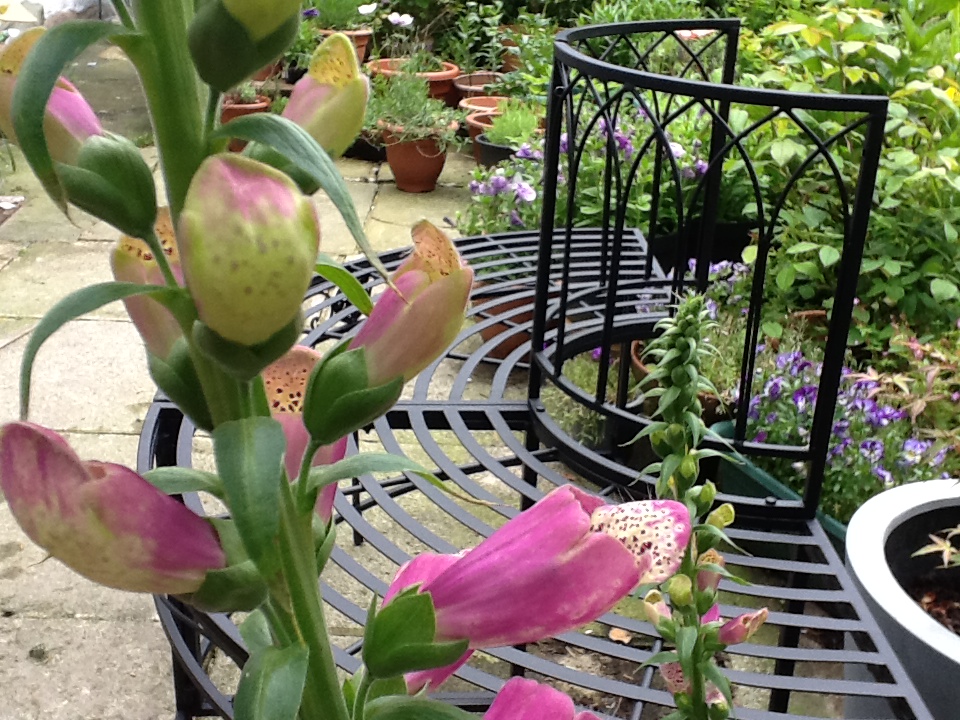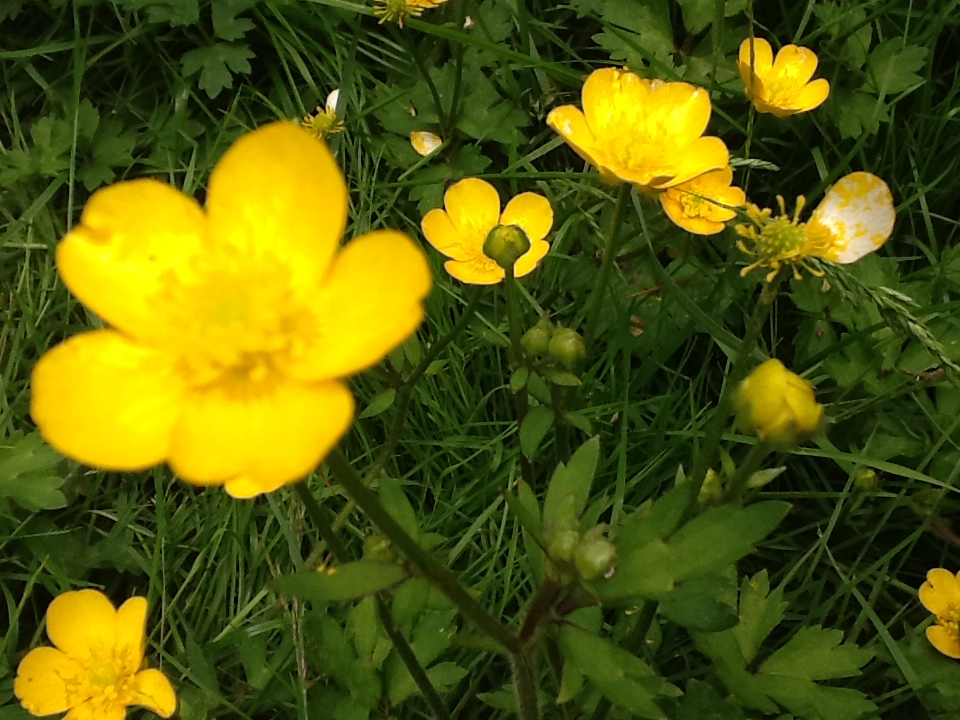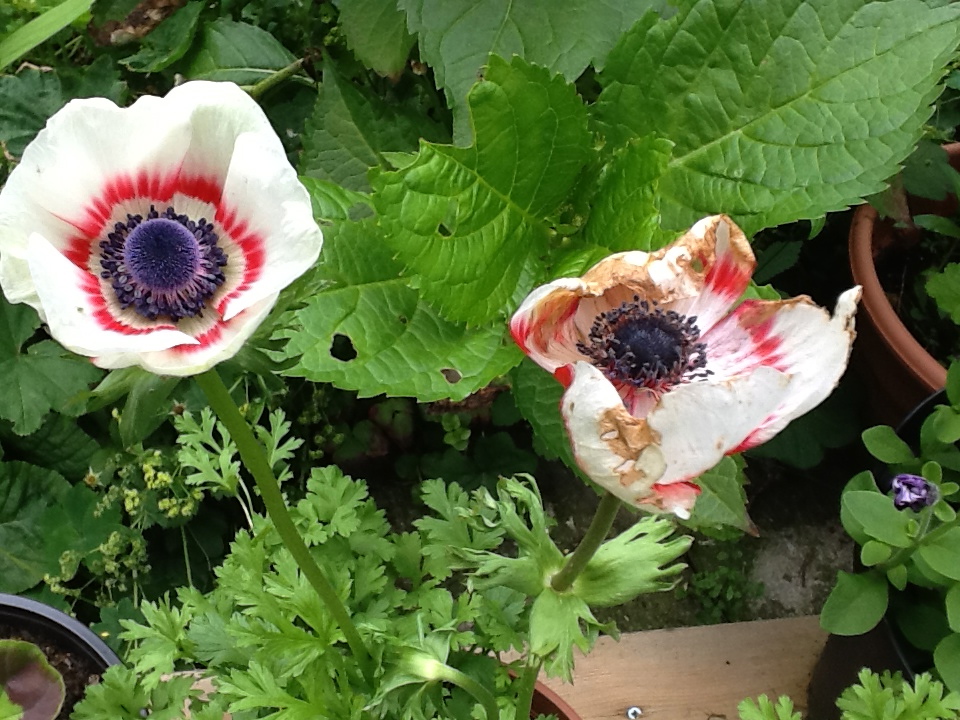 Actually, most of June so far has taken place in the shed, the greenhouse, the kitchen, the garage – almost anywhere but the garden! The problem with a wet June is that as far as the plants go, on the whole, it is heaven and we humans have trouble keeping up with them.
Actually, most of June so far has taken place in the shed, the greenhouse, the kitchen, the garage – almost anywhere but the garden! The problem with a wet June is that as far as the plants go, on the whole, it is heaven and we humans have trouble keeping up with them.
Lawns are a case in point
Try to cut long in wet weeks. The cells of well watered grass are full of sap, and when we cut them short, they spill their contents making the tips of the cut die off – not in a uniform manner, but in a ragged way. If ever the sun does come out to dry the lawn, these tops not only look white, but can encourage moss. Keeping the lawn an inch longer will cut this effect.
Keeping off the lawn is a prerequisite in wet weather – but keep an eye out for the wettest part of the lawn – here is where the moss will grow. You can use one of Primrose’s moss killers to keep the moss under control, but you are advised to make sure the lawn drains properly. If you have puddles on the lawn you certainly need to improve drainage. This can be anything from a good aeration with a garden fork, to lifting the lawn and laying drainage material, from stones to tubes.

Actually, rain can be the organic gardener’s best friend – especially when it comes to vegetables. A blisteringly hot summer leaves crops under water stress, which has more than one adverse effect. Wilt caused by a lack of water brings with it many problems. Firstly, where wilting is not so bad, plants such as cabbages lay down wood filled cells to help it stand upright, and this can lead to a tough vegetable.
Where wilting is severe, cells actually split under pressure. This in turn can lead to fungal infections that might not be visible at the time but will mean the vegetable does not store as well as it ought. This is particularly true for onions.
Another advantage of the rain is the lack of insect pests, and what there are around are more quickly gobbled up by grateful birds who need to feed themselves and their young.
Insects are more temperature dependent than anything else and a few degrees cooler weather will more than halve the insect population.
Unfortunately, the same is true for plant growth
Plants are even more temperature dependent than insects and a cool, wet June leaves the garden looking lush but diminished. In particular, delicate flowers are bashed about by the falling bullets of rain, which have enough energy to smash flowers to pieces.

I try, whenever I hear of the rain on its way, actually I can see it running up the valley towards us, to get my Pull out Fleece Grow Tunnel and cover wherever I can, and anything it doesn’t cover, I use my roll of Frost Gard fleece. Anything to keep the anemones from ending up dead on the floor. If you can, cover up!
But me no butts
I always worry on the allotment. It came about one time when a child got stuck in a water-butt – he had climbed up to get on the shed roof, fell over and ended upside down, stuck in the top. Fortunately, it was empty, and some chaps on the allotment cut him free. Imagine what might have been the case if it was full – so my plea, please make sure your water storage is child proof, with its lid securely in place.
Water feature
There have been times when the whole garden has been a single, huge water feature. It’s especially gorgeous with green leaves growing and dripping water – it’s the sounds I love. One becomes isolated, cocooned if you like, in a good coat and hat, just admiring the rainy garden.

But it’s after the rain that’s the problem. In our wooded garden, where my new Primrose water feature sits, leaves knocked off by big blobs of rain and lots of dusty debris from the trees covers everything! I religiously wander around the garden cleaning, especially the water features, because I don’t want them to clog up. Moreover, pots get splashed with mud and what my father used to call ‘gubbins’ and generally look a mess.
It’s a bit like leaving your washing out in the smoky city in the rain, it needs washing again! Funny that, water we use for washing making everything dirty!

Paul Peacock studied botany at Leeds University, has been the editor of Home Farmer magazine, and now hosts the City Cottage online magazine. An experienced gardener himself, his expertise lies in the world of the edible garden. If it clucks, quacks or buzzes, Paul is keenly interested.
He is involved in an inner city program in Manchester which aims to encourage people to grow their own food whether they have a garden, an allotment, or even a balcony, as well as leading a co-operative initiative to train city dwellers to keep bees on allotments and gardens
He is perhaps best known as Mr Digwell, the cartoon gardener featured in The Daily Mirror since the 1950s. As Mr Digwell he has just published his book, A Year in The Garden.